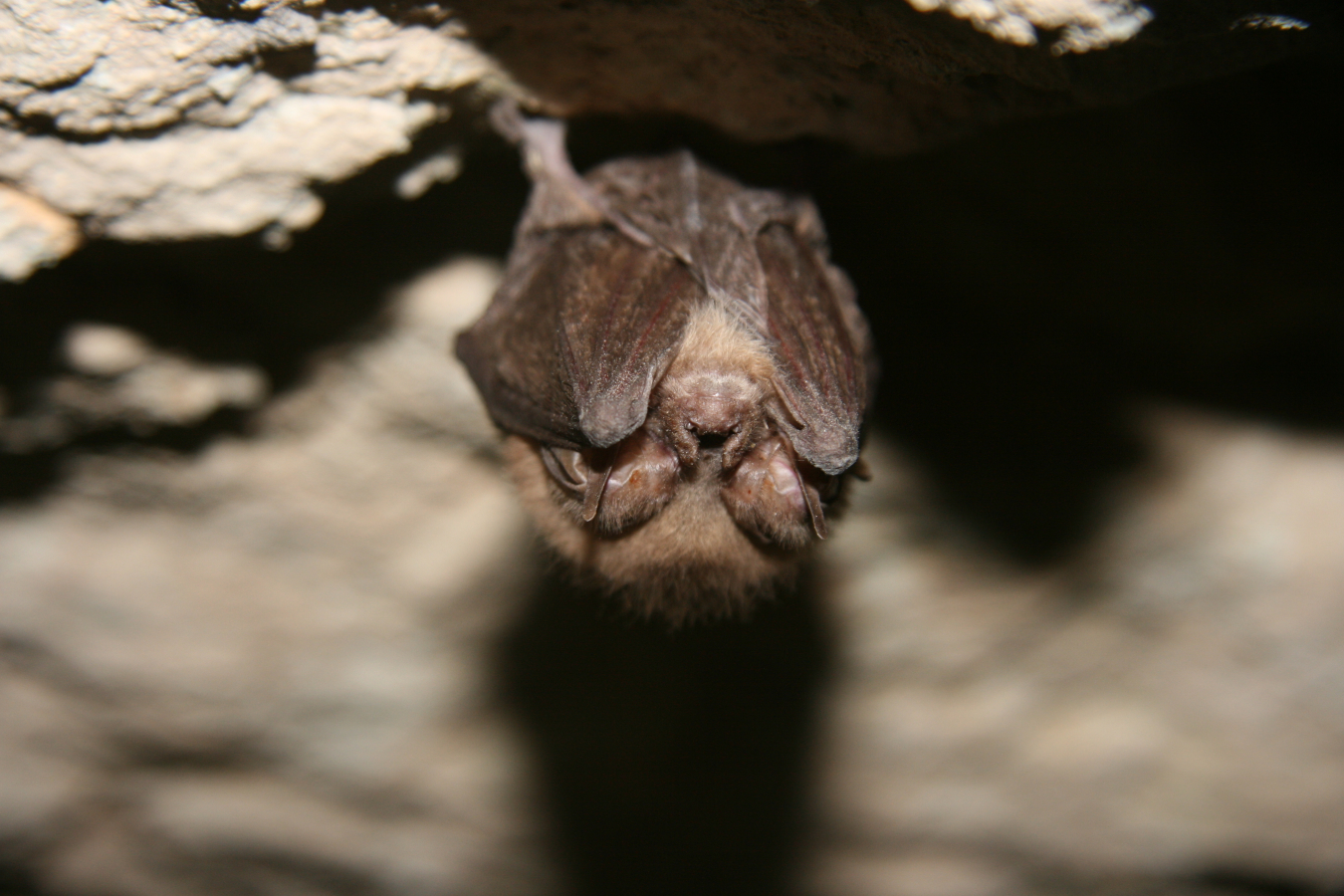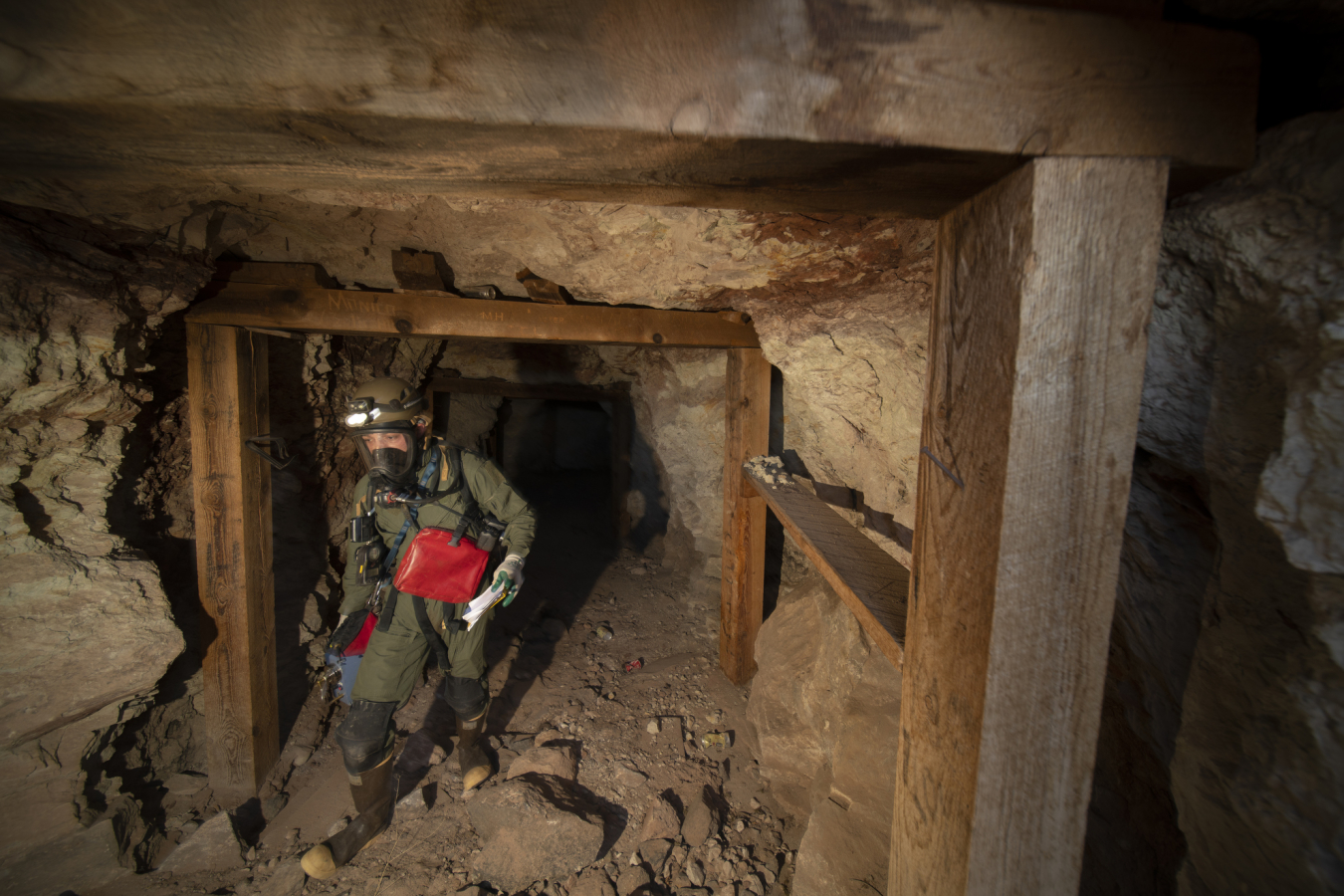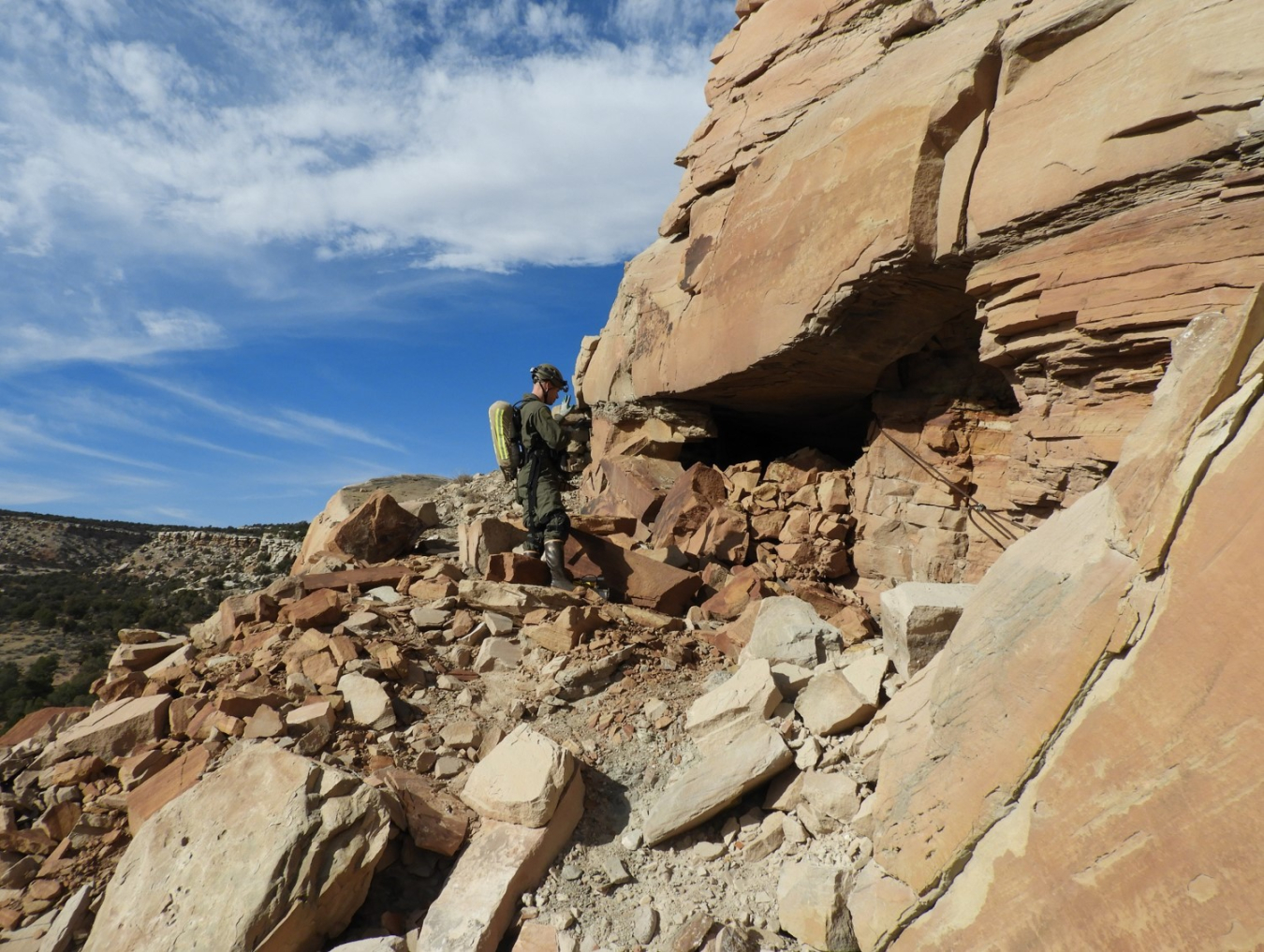Underground surveys shed light on animal populations living in the dark of abandoned mines.
October 27, 2021Moving from a bright, sunlit day, an intrepid duo descends into the dark, dry and seemingly deserted workings of an abandoned mine. One leads the way, gingerly stepping on uncertain ground in the darkness with the other following closely behind. Donning masks to filter the air in the potentially toxic, enclosed space, the pair look and sound like twin Darth Vaders, as they survey the underground. The flutter of a wing or a brief glimpse of bright eyes peering from a crack in the rock would frighten the faint of heart, but it’s exactly what the investigators are looking for.

A Townsend’s big-eared bat (Corynorhinus townsendii) hibernates in an abandoned uranium mine. This species is one of the most commonly encountered in old uranium mines. Photo credit: Jason Corbett, BCI.
Eerie as they may seem, these subterranean surveys at some of the Department of Energy (DOE) Office of Legacy Management (LM) Defense-Related Uranium Mines (DRUM) program sites are crucial in understanding local bat populations and how to protect them.
Individuals working in the DRUM program, as well as those in federal land-management agencies, state abandoned mine lands programs, and tribal governments, work with Bat Conservation International (BCI) to conduct surveys of inactive, abandoned, or orphaned mines where uranium was extracted to support the nation’s first nuclear program.
Founded in 1982, Bat Conservation International has grown into a globally recognized conservation organization dedicated to ending bat extinctions.
“Sealing off the old mines is an important milestone in LM’s safeguarding efforts, but it can’t be done without first taking the right steps to protect animals that may be inside,” said Padraic Benson, a DOE program analyst. “Also, entering abandoned mines is dangerous and should never be attempted by the public.”

BCI Subterranean Specialist Ethan Sandoval navigates his way out of an abandoned uranium mine after completing an internal survey. Photo credit: Bill Hatcher.
The three-person DRUM team works in tandem, each with specific duties. A portal attendant outside acts as a safety link to the surface and a point of contact should issues arise for the team underground. The safety lead is first into the mine, identifying rock and ground conditions, with a 360-degree awareness of their surroundings and hypervigilance for any safety concerns. Behind the safety lead is the biological lead who takes specific note of animals, micro-climate, micro-habitat, and signs of animal use, as well as hydrologic conditions and any evidence of historical cultural resources. Everything is recorded digitally.
Biologists enter the mines to identify which species of bats and other animals live there. Identifying bats can be challenging -- the differences between species can be as minor as a flap of skin on a tail membrane or the difference in forearm length, details only visible when holding the bat inches away.
“I know going underground is creepy to some, but it is critical to understanding wildlife, in particular bat-use of a site,” said Jason Corbett, Director of Habitat Protection & Restoration at BCI. “You can’t just make an assumption from the surface. Our teams rely on finding and identifying ‘clues’ that bats leave behind, such as roost stain, guano, insect parts, or tiny scratch marks where bats repeatedly grasp onto the rock.”

BCI’s Director of Habitat Protection and Restoration Program, Jason Corbett, prepares to enter an abandoned uranium mine to search for signs of wildlife. Photo credit: Shawn Thomas, BCI.
Not only do these clues help distinguish between different types of bats, they can also indicate how many inhabit the area and what type of roost it is -- day, night, maternity, or hibernaculum. LM doesn’t just conduct mine surveys for the thrill – collecting as much detail as possible about animal populations helps the organization protect their habitat and fulfill environmental compliance regulations.
“Changes in the environment are making these surveys more important than ever for maintaining the health of bat colonies the areas they inhabit, and thus the ecosystems we rely on as well,” Corbett said.
Some mines might not show any signs of use or offer any viable habitat and can be closed off to allow for remediation of the sites. For mines that do house bat colonies, BCI provides recommendations to the land managers on safeguarding methods that will best suit the subterranean residents. Large colonies call for different types of gates than small colonies, and some species require different remedies than others.
Protecting bat species is a crucial part of LM’s work in safeguarding the environment and promoting biodiversity. Though they may be the predators in our Halloween tales, bats face a number of threats in their ecosystems -- from forest fires, to droughts, to diseases such as white-nose syndrome.
Though they require a journey into the dark, subterranean surveys at DRUM sites shed light on a critical aspect of the organization’s mission. When it comes to long-term environmental stewardship, particularly within abandoned mines, LM knows there is more than meets the eye.

